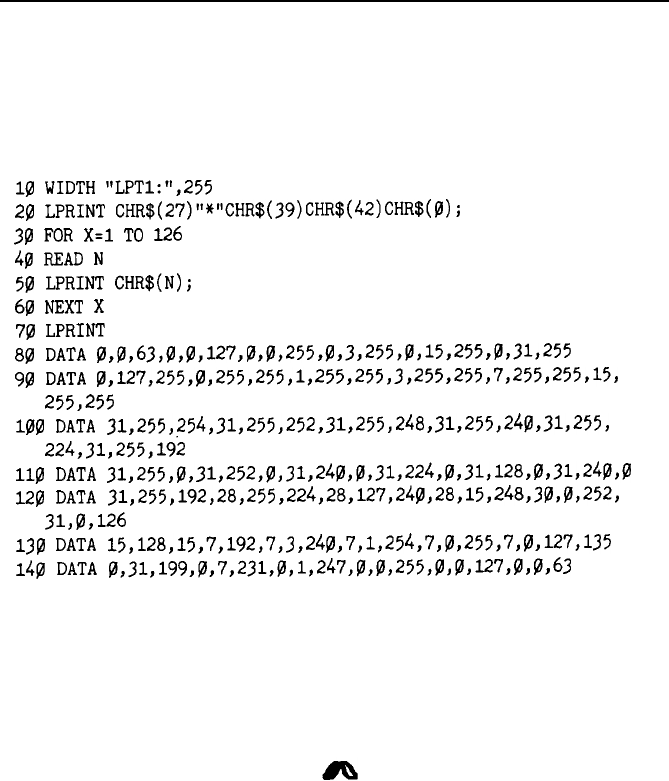
Graphics
Here is the BASIC program that prints the design shown on the
previous pages. Notice that the data numbers in lines 80-140 are the
same numbers that you see in the last illustration. Also note that
the WIDTH statement in line 10 is for IBM PC BASIC; the format
may be different for your system.
10
WIDTH
"LPT1:",255
20
LPRINT
cHR$(27)"*"CHR$(39)CHR$(42)CHR$o;
30
FOR
x=1
To
126
40
READ
N
50
LPRINT
CHR$(N);
60
NEXT
X
70
LPRINT
80
DATA
0,0,63,0,0,127,0,0,255,0,3,255,8,15,255,0~%255
90
DATA
0,127,255,0,255,255,1,255,255,3,255,255,7,255,255,15,
255,255
100
DATA
31,255,254,31,255,252,31,255,248,31,255,240,3l,255,
224,31,255,192
110
DATA
31,255,0,31,252,0,31,240,0,31,224,0,31,12~,0,31,240~0
120
DATA
31,255,192,28,255,224,28,127,240,28,15,248,30,0,252,
31,0,126
130
DATA
15,l28,15,7,192,7,3,240,7,1,254,7,0,255~7~0~127~l35
140
DATA
0,31,199,0,7,231,0,1,247,0,0,255~0~0,~7,0,0~63
In this program, line 20 assigns the graphics option (24-pin triple-
density) with code 39. Code 42 sets the number of pin columns at
42. Lines 80-140 contain 126 bytes of data (42 pin columns x 3 bytes
for each pin column). Lines 30-60 print the design that you see
below.
Notice that the dots overlap quite a bit. This design was printed
using the triple-density 24-pin graphics option because the density is
the same (180 dots to the inch) in both directions.
4-17


















